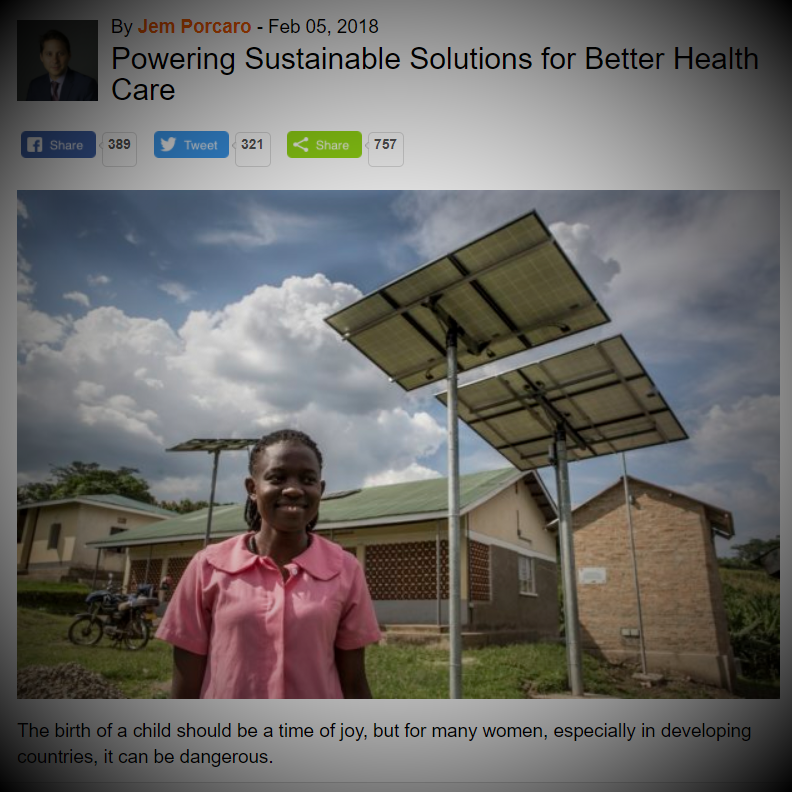
The birth of a child should be a time of joy, but for many women, especially in developing countries, it can be dangerous.
Women in developing countries are 300 times more likely to die from childbirth than women in developed countries. According to estimates by the World Health Organization (WHO), in 2015, approximately 830 women died every day due to complications during pregnancy or childbirth; 99 percent of these deaths occur in developing countries. Adding to the tragedy, most of these maternal deaths occurred in low-resource communities and could have been prevented.
The good news is that we have solutions to make child birth safer for mothers and babies – but we need to get them to more communities. Access to electricity is a powerful solution that can improve the quality of health care services for mothers and their families.
When health facilities have sufficient and reliable power, women can more safely give birth at night in well-lit delivery rooms, medical equipment can be better sterilized, and clinics can preserve lifesaving vaccines for newborns, children, and adults. However, in most of sub-Saharan Africa, roughly one-third of health facilities have reliable access to electricity, as most primary health care facilities are remote and not connected to the national grid.
The Promise of Sustainable Energy
Fortunately, solar energy is changing this reality. This past fall, the United Nations Foundation broke ground on an innovative project to electrify health facilities with the power of the sun. With support from the U.K. Department for International Development, we are implementing off-grid solar power systems at 36 primary health care facilities in Uganda and a further 26 in Ghana, improving access to health services, particularly maternal, newborn, and child health services in rural areas.
Altogether, these 62 installations will add 242 kW of solar energy to both health sectors and serve an estimated 650,000 community members across both countries, improving the quality of life for thousands of women and children.
In parallel, the UN Foundation has partnered with WHO to carry out an evaluation of the project to help build a much-needed evidence base for further investments like these.
Underpinning the project is a strong emphasis on sustainability. By working with local industry experts, as well as ministries of health and local communities, we are designing and installing high-quality, holistic solutions that meet both the current and future power needs of health facilities, including providing power for health facilities that have staff quarters to provide better living conditions for on-site health facility staff. Moreover, we promote long-term sustainability by training local technicians and government officials to remotely monitor each system’s performance and to provide adequate maintenance. These measures help ensure the longevity of these investments and the development dividends they enable.
A Brighter Outlook
This spring, we will share stories that document the perspectives of mothers, midwives, and others who have experienced the transformation at these facilities. Looking ahead, we hope to inspire and inform decision-makers from the energy and health communities to scale-up investments in powering health care.
Together, we can show how sustainable energy access (Sustainable Development Goal 7) is closely connected with progress on health (Sustainable Development Goal 3) and other efforts to improve the lives of the most vulnerable, especially women and children.
When we power health care, we can empower brighter, healthier, and more sustainable communities.
